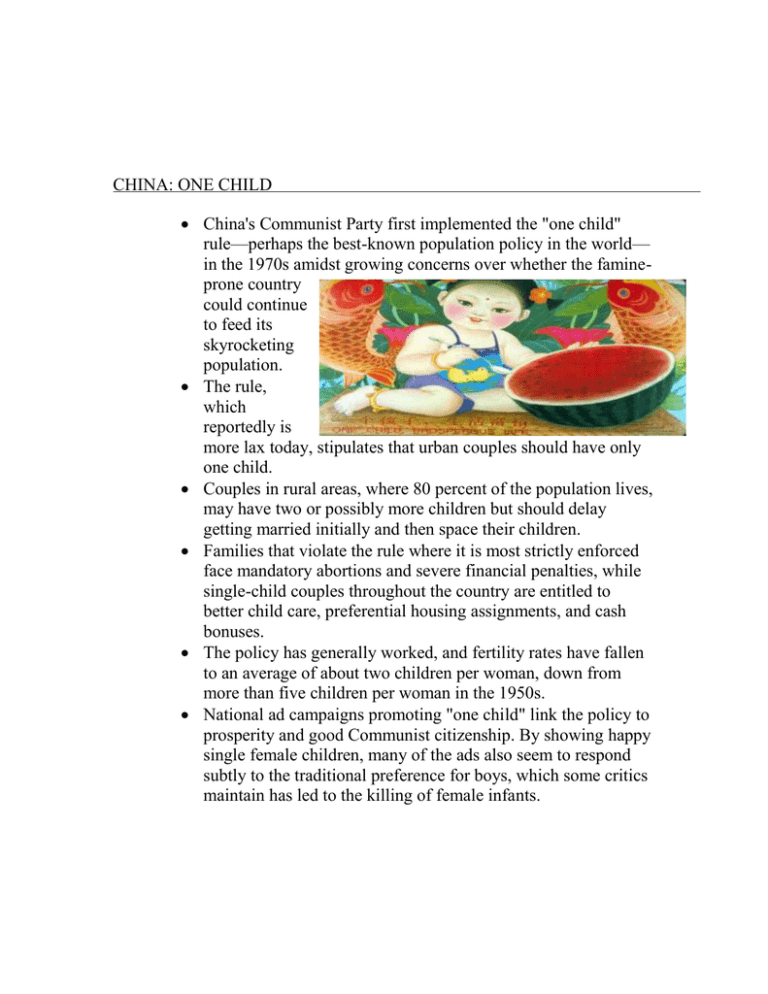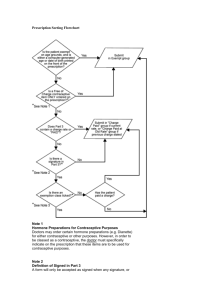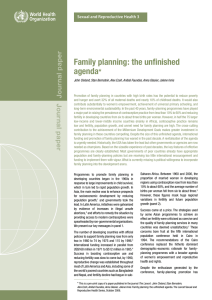Document 14531247
advertisement

CHINA: ONE CHILD China's Communist Party first implemented the "one child" rule—perhaps the best-known population policy in the world— in the 1970s amidst growing concerns over whether the famineprone country could continue to feed its skyrocketing population. The rule, which reportedly is more lax today, stipulates that urban couples should have only one child. Couples in rural areas, where 80 percent of the population lives, may have two or possibly more children but should delay getting married initially and then space their children. Families that violate the rule where it is most strictly enforced face mandatory abortions and severe financial penalties, while single-child couples throughout the country are entitled to better child care, preferential housing assignments, and cash bonuses. The policy has generally worked, and fertility rates have fallen to an average of about two children per woman, down from more than five children per woman in the 1950s. National ad campaigns promoting "one child" link the policy to prosperity and good Communist citizenship. By showing happy single female children, many of the ads also seem to respond subtly to the traditional preference for boys, which some critics maintain has led to the killing of female infants. INDIA: CHANGING ATTITUDES India's population has more than doubled since its familyplanning policy went into effect in the 1950s, and current projections predict that India will overtake China's position as most populous nation by 2050. However, India's total fertility rate has declined by more than 40 percent since the 1960s, and today the average number of children per woman is around three. The country's most recent approach to population issues focuses on the advancement of women economically, academically, and socially, as independent women are more likely to have small families. This is a change from the darker days of India's population policy. In the 1970s, the government declared a population "state of emergency," began implementing forced sterilizations in the nation's poorest regions, and even rewarded medical workers who performed the most operations. Advocates of child spacing, informing women and men about the range and availability of contraceptive methods, promoting small family size, and presenting sterilization in a more humane light. Another key issue that Indian public information campaigns have widely targeted is favoritism for boy children, a deeply ingrained tradition that drives couples to have more children. KENYA: PROMOTING PROSPERITY Kenya was the first country in sub-Saharan Africa to view runaway population growth as a serious impediment to economic prosperity, It became the first, in the late 1960s, to begin developing a national family-planning campaign. The country's official population policy calls for matching population size with available resources, yet leaves decisions on family size up to individual families. The average number of children per woman has dropped to around four from around eight in the 1980s, which constitutes one of the fastest-ever national declines in family size. Contraceptive use has grown from seven percent in 1978 to over 30 percent today. AIDS, which affects one in ten Kenyan adults, is a significant factor in both higher contraceptive use and the lower fertility rate. As seen in the posters , Kenya's population ads target both men and women, and tend to frame the need for family planning around the self-evident realities of population growth such as overuse of land and scarcity of jobs. The campaigns also aim to demystify contraceptive methods and provide assurance of their safety and utility, especially in rural areas, where suspicion and misunderstanding are common. SOURCE: www.pbs.org, “world in the balance”









